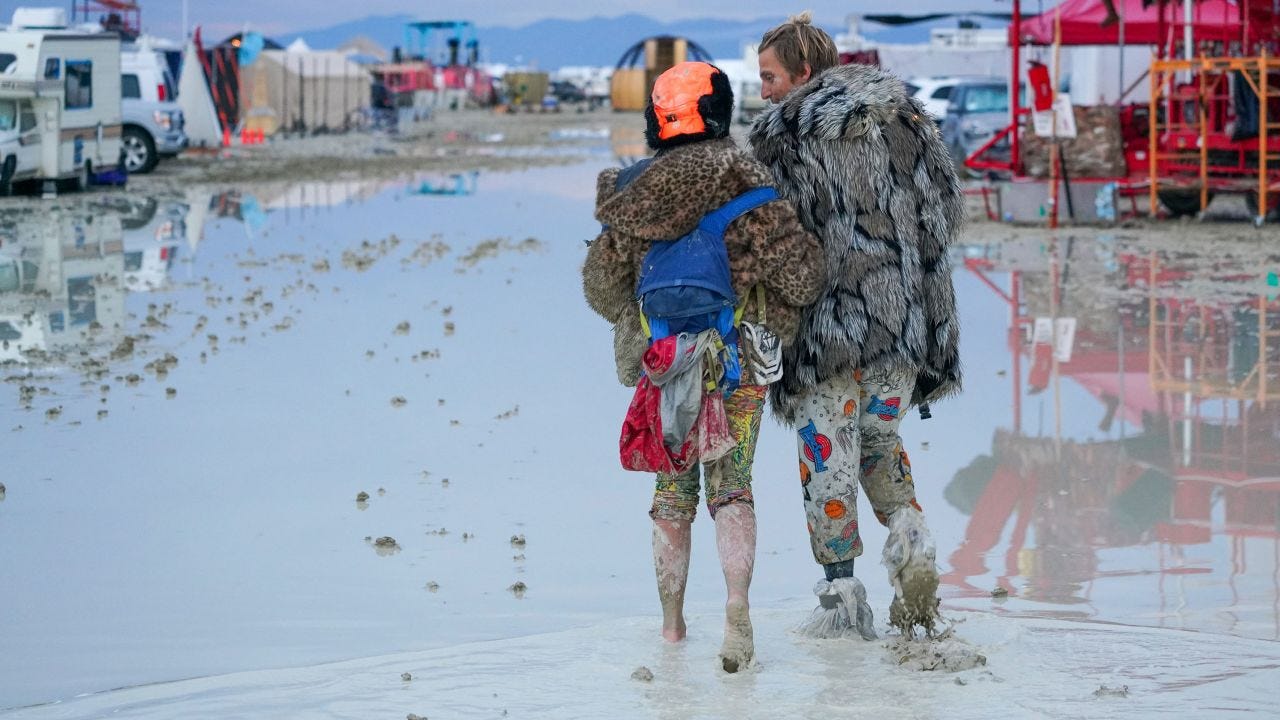Episode Summary
So by now I’m sure many of you have seen videos of the muck, sludge and mire that befell this years Burning Man Festival which takes place every year in the middle of the black rock desert. From its humble beginnings in the late 1980s attracting about 300 people, Burning Man has exploded into a global event that just seems to keep growing and growing.This year, in about 24 hours, the area experienced about 2-3 months worth of rainfall, resulting in a shelter-in-place order, the closure of the festival’s entrances and exits and stranding about 70,000 people in the clay-like mud of the Playa (aka the sunken dry lake bed where the festival takes place). When the weather began to clear, so too did its attendees, creating a seemingly never-ending exodus of muddy cars, trucks, vans, RVs and everything in between. I’ve never been to Burning Man myself but even before seeing the aftermath of this year’s rainy mess, data released over the years about its ever-growing carbon footprint has turned me off from it completely. In just one week of its ephemeral existence, Burning Man produces over 100,000 tons of carbon dioxide with 90% of that coming from attendees traveling to and from the festival.The festival’s principles of radical self reliance and leave no trace seem to be at war with each other in the face of our new climate reality. How do you stop a culture of disposability and encouraging folks to carry in what they can carry out, while also encouraging them to prepare extensively in order to survive the increasingly inhospitable conditions on the Playa?The amount of trash and belongings left behind this year compared to other years though, was shocking. Because so many bikes, vehicles and belongings got stuck in the wet, muddy clay from the rain and flooding, and with most of its attendees long gone by now, organizers are now faced with the daunting task of cleaning up. My friend Deonne John, who is a member of the Reno-Sparks Indian Colony and who’s husband Matt John, is a member of the Pyramid Lake Paiute Tribe, reservations that lie just south of the festival site, spoke to me to discuss her feelings about Burning Man, its both negative and positive impacts on her community and other environmental issues facing sacred land in that area like the Thatcher Pass Lithium Mine Project. At the end of this years festival, many acts of altruism, sharing of resources and shelter for those attendees struggling in the heavy rains were reported. Perhaps the thing that kinda killed everyone’s vibe, brought everyone a little closer to those OG Burner principles. It’s also worth pointing out that climate activists delayed entry to the festival by blocking the two-lane road with a trailer, demanding Burning Man “Ban private jets, single-use plastics, unnecessary propane burning, and unlimited generator use per capita at the nine day event in Black Rock City, Nevada.” Law enforcement eventually broke up the protest, and the steady stream of burners were able to make it inside the makeshift city.But however you see Burning Man, good or bad, it only comes around once a year for a week. But something like the proposed Thacker Pass Lithium Mine, remains a looming threat that will change that area of land and its water forever.Protect Thacker PassDefend the Sacred! Get full access to Earth to Humans Podcast's Substack at earthtohumanspodcast.substack.com/subscribe
